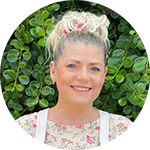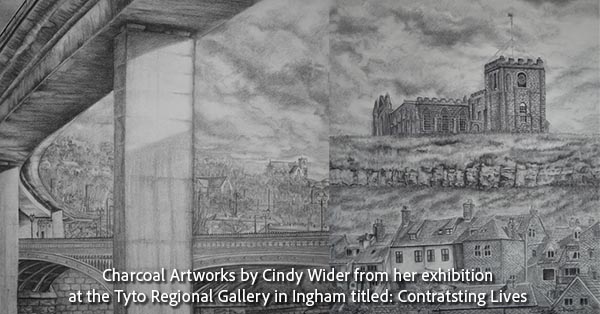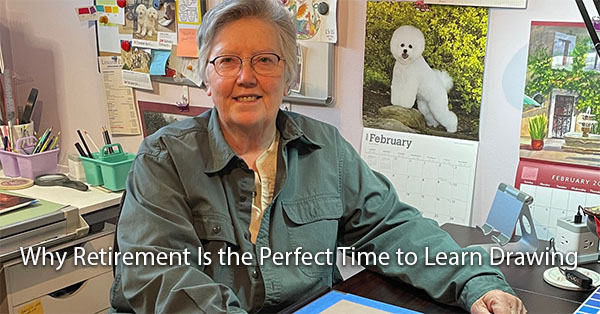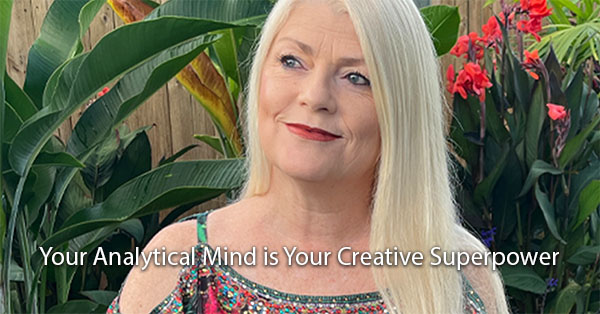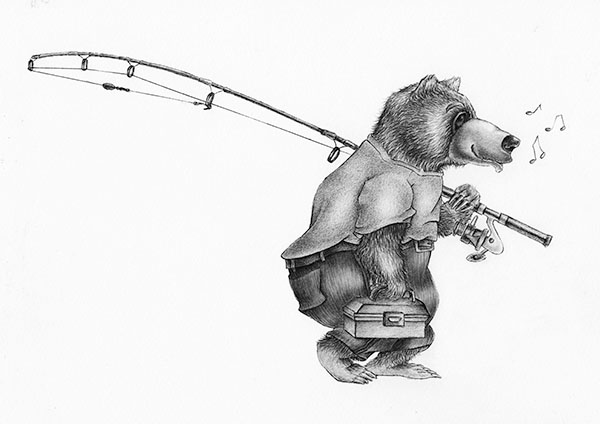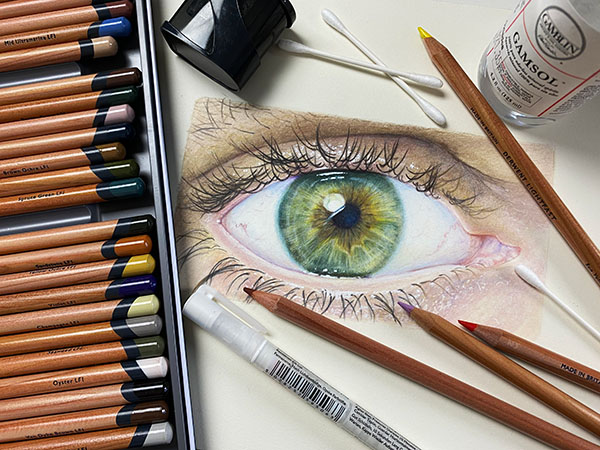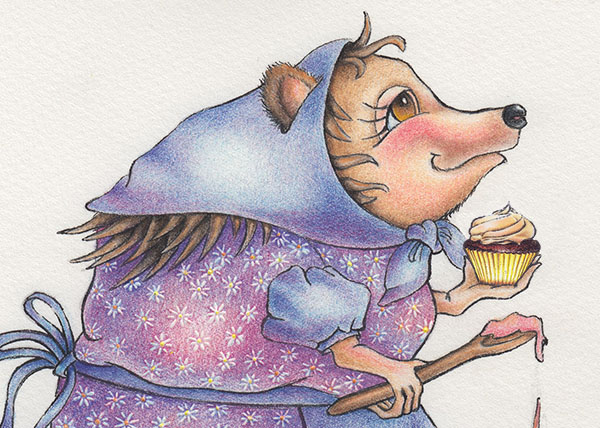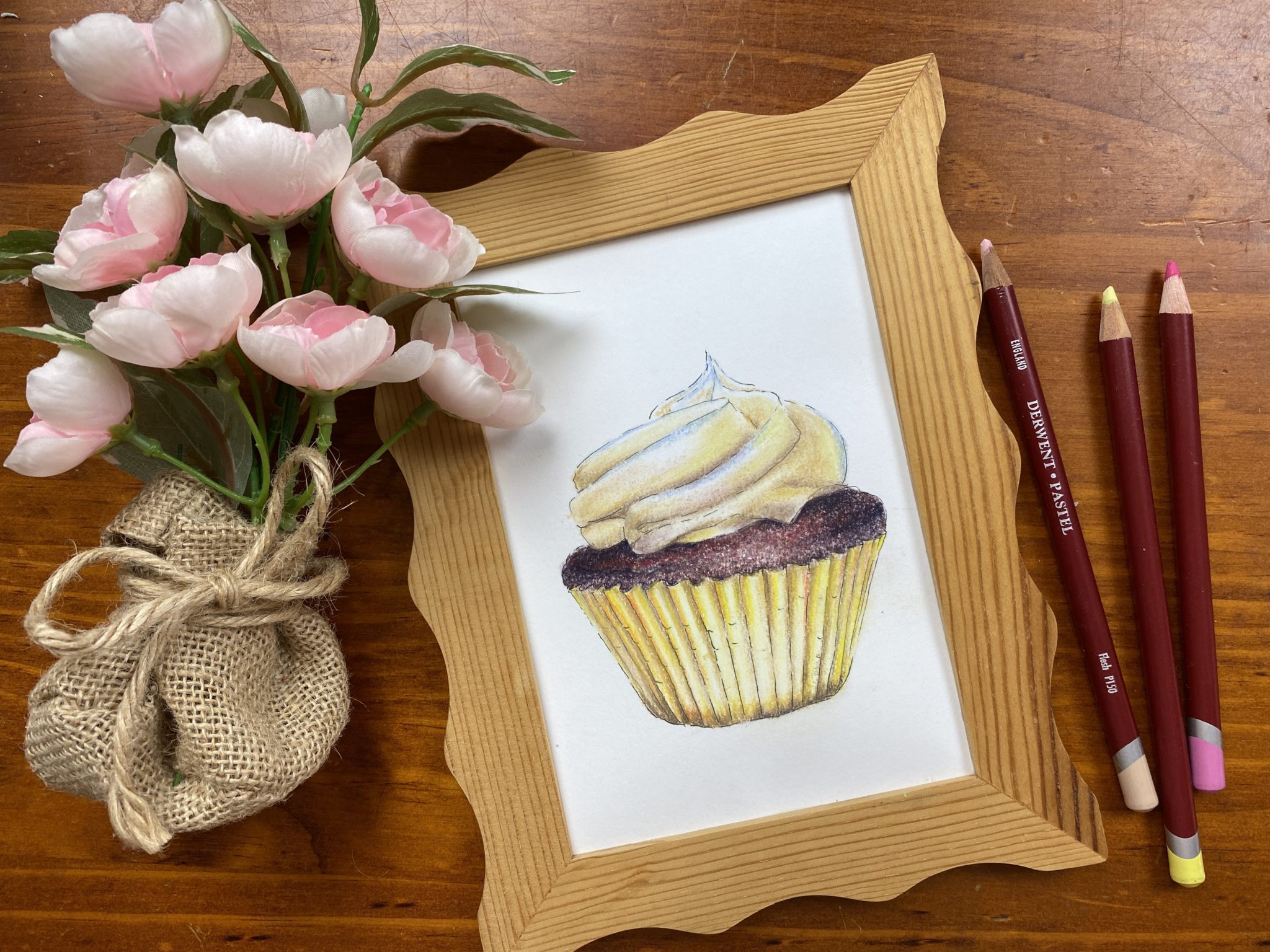When contemporary coloured pencil artist Richard Klekociuk flew into town I met up with him to chat about his art and unique bright bold hard-edged coloured pencil style.
In this video Richard guides us through a personal tour of the Cairns Botanic Gardens in Far North Queensland. It’s a place which he has found to be filled with such a rich source of reference photography and inspiration.
If you are a beginner artist wondering how and where to start finding your own unique source of inspiration then Richard has some very useful tips just for you.
Video created on location at Flecker Gardens, otherwise known as the Cairns Botanic Gardens, Far North Queensland Australia.
Richard Klekociuk Links:
Video Transcript
0:05
Richard: Look how big some of these leaves are. They are absolutely massive.
Cindy: Wow!
Cindy: Hi and welcome! Here I am in the gorgeous Cairns Botanical Gardens and I’ve got a really special guest for you today. Welcome Richard to DrawPj.
Richard: Thank you Cindy. Thank you very much.
Cindy: Now Richard works in the most amazing style. It’s so beautiful and filled with light and colour. He’s a multi award-winning artist, gallery represented and it’s a real privilege to have him here with me today.
Spending Time in the Botanic Gardens
0:33
Cindy: You’ve spent a lot of time in the Botanical Gardens haven’t you.
Richard: I started visiting here in 1991, so I watched the gardens grow, things change, the effects of cyclones and how the landscape recovers so quickly. Here things grow hugely quickly. It’s amazing that the recovery that the land has here after such things as a cyclone.
Richard’s Art Style
0:54
Cindy: So Richard how would you describe your art style.
Richard: I like to analyze. I like to look at layers. I like to look at objects devoid of detail.
Jeffrey Smart, an Australian artist, his work appeals to me. Fred Williams’s work appeals to me. How they have taken their subject and reduced a lot of the detail but still retain the atmosphere.
One of my friends Kevin Crais who is a master photographer in Tasmania did or still does photographic cleansing where he analyzes a subject and removes all the superfluous detail. In fact it was 2006 I remember when Kevin and I were getting together and sharing each other’s ideas and work.
Up until then I’d still been part realism, part semi abstraction, part abstract, but I wanted to see something a little bit simpler, so I take an idea and I just let it develop and that often results in semi abstract work or in the case of the Flecker Gardens some quite interestingly, for me anyway, abstract work. So it’s another way of looking at something that’s real but breaking it down.
Cindy: How do you capture that idea of layering in your work?
Richard: When I first look at something I always, to me anyway, what’s important is how I feel about what I’m looking at.
I will spend five or ten minutes in the place and I just sit there and I listen, I don’t look, I actually listen. I try and capture the mood for the place and in this case here quiet… The odd chainsaw and whatever in the distance, but birds coming and going, but fairly natural and I like to feel the smell of the place, in this case the heat of the place and then I look at the light and the light to me is really important.
It’s all green. Look how much green is around us. There’s the occasional bit of colour of flower and seed and the decay, and the decay really interests me. I like the way things in the tropical rainforests fall down break down really quickly, but in that process there are times when some of the leaf litter on the forest floor is really bright, so I love the bright, I love the contrast of bright and thenthe interplay of light.
Inspiration in the Stream
3:14
Here’s a really great example of what I’ve been talking about. Look at this submerged or semi-submerged basically leaf here. This red one. Its gorgeous. Look at those bright colours. Look how strong the greens are.
Cindy: yes!
Richard: Totally foreign to any leaf around it. There’s a subtle reminder here. This is a faded version, but when I came to a place like this I simply will get my camera out and I record that. I need to record it because when I come back again it will be totally different.
Nothing stays the same here. Another good gush, fall of rain will come down, and wash more leaves down and it will change totally so it’s really important when you come to a place to record as much as you can and then revisit the place because again it’ll be different.
Well something just moved there. Something swam off there. But again I just love the play of light on this is.
Cindy: Is that what’s exciting you then and motivating you to draw that perhaps later? Yes I’ll just wait, I liked a little bubbles the way the bubbles are sitting there and there’s a little leaf which is just gone into there and it’s hitched a ride on a bubble there. I’ll just record that.
The Dry Creek
4:18
Richard: There’s a small amount of water over in the corner there. When I was here last there was a beautiful trickle of water coming down here and just lots of semi-submerged leaves. There was a whole collection which was lined up down here and I spent so long over on that bank taking photos. And the light was just right. It was bouncing off the
water and the water was rippling down.
It was just layers and layers. It was afascinating place and now it’s almost totally dry, but give it another month and the water will come gushing down again.
Richard’s favourite medium: Coloured Pencil
4:51
Cindy: So Richard what medium do you prefer to use in your work?
Richard: Colour pencil. Colour pencils always been for me the medium I thought I was born to have. Because I love it, because it’s clean, it’s not messy. I can take it anywhere I like. I can draw in the most weird places, inside, outside, any time of the day or night. But it’s just one of those accessible mediums. I love painting. I’m a trained sculptor but I don’t sculpt anymore, maybe one day.
I also love digital art and I’ve done a lot of digital work and I’ve exhibited digital work. Digital work to me actually complements my pencil because it’s almost the opposite.
The colours have no texture but pencil drawing has still got it over digital art because when you look at it you feel like you just want to pick them up or run your hands over them. It’s that little bit of texture because I don’t use paper and I use pastel board which has got that nice general texture of Mie Tientes paper on it. It gives us slightly stand up three-dimensional look and that’s what I really like about…
People have often said to me they like my gouache paintings and I try to explain to them that I love guoache… I actually paint in gouache too but this is not gouache it’s colour pencil, and some of them genuinely don’t believe me.
Death, Decay and the Banana Leaf
6:07
Cindy; Ohh! look at that gorgeous yellow orange banana leaf.
Richard: Oh beautiful.
Cindy: I love the red!
Richard:…and of course this is now the leaf in its final stages of decline, before it hits the forest floor breaks up and goes back into the soil. It’s a beautiful contrast between life death and this in-between, this breaking
down, it’s almost autumn look. Whereas autumn doesn’t exist up here course. It’s wet and dry but it’s lovely to see the decline.
I just love the colour contrast and the texture contrasts. And it’s loud. It’s nothing soft and gentle up here, it’s often loud colour.
The Tanks Art Centre Pond
6:43
Richard: When I was teaching here at the Cairns Art Escape in July a couple of years ago one morning I walked across the bridge and I looked down and for some reason something caught my eye.
It was just a pile of leaves but the way the light was hitting the water I saw these wonderful reflections in here so before I even started my class I had to come out with a camera and go clickity clickity click and record it all, but after that… after the course finished and I went back to Tasmania I ended up producing a particular drawing which showed… it was almost sinister in a way. It was so dark yet within there were just little pockets of colour. I just rather liked the way these pockets of color floated around and you could just make out that was a pond and it was the first drawing I’ve finished before I left Launceston to come to Cairns last year.
Advice for beginner artists
07:34
Cindy: What’s one piece of advice that you would give to artists just starting out who might be wondering where to find their inspiration from?
Richard: Try and be yourself, find out who you are. Try and avoid copying the work of other people. By all means look at the work of other artists, study art history. Art history can tell us a lot about the way people have thought in the past because a lot of the art we do today, in fact maybe some people say all of the art we do today is based on what has been done before but the way we do it is the way we see it.
By all means take photos but take photos of various subjects, go around in the outside, see things, look at shadows, look at light, go out on windy days, go out on still days early in the morning, late afternoon, look at objects in the home, those sort of things are just simply what you see and you’ll build up a lovely library of reference material.
Summary
8:29
Cindy: Well thanks for that great advice Richard and where can we find out more about your work?
Richard: My website is my main source of work that’s at artklecko.com but I also have an active blog which I post at least once a month, I have a Facebook page and my representative gallery, Gallery Pegean in Launceston.
Cindy: Fantastic and I’ll put some links to all of Richard’s works below for you.
Well thanks very much Richard, it’s been fantastic meeting up with you today and chatting about your work. It’s been so interesting and loads of fun as well.
Richard: It’s been an absolute pleasure Cindy.
Cindy: And thank you too for joining us and I’m gonna see you next time but remember to “just show up at the table because the rest will take care of itself”

